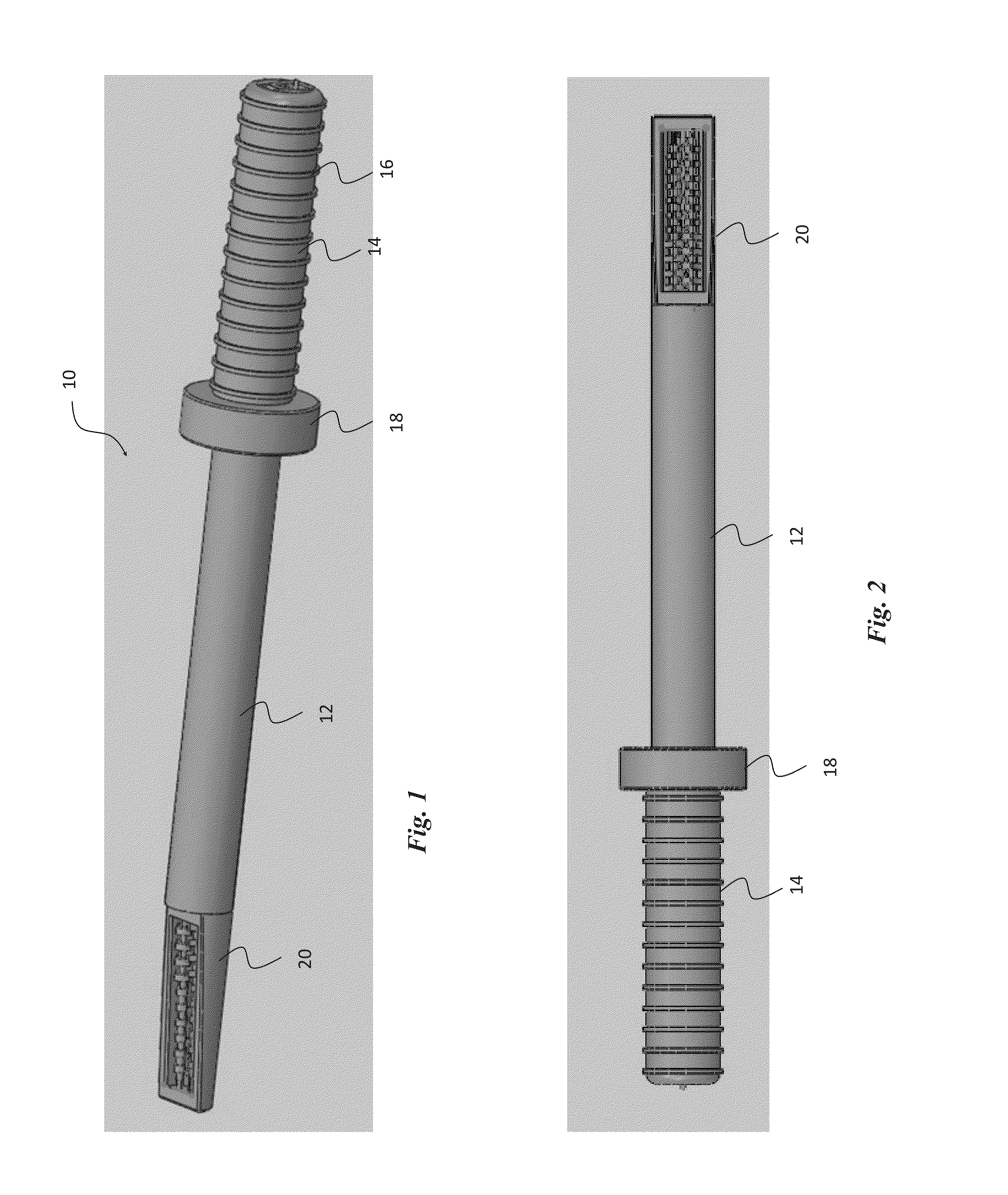Minimally invasive laparoscopic tissue removal device
a tissue removal and minimally invasive technology, applied in the field of laparoscopic operations, can solve the problems of device running across similar flaws, reducing the overall safety of the operation for physicians and patients, and straining and fatigu
- Summary
- Abstract
- Description
- Claims
- Application Information
AI Technical Summary
Benefits of technology
Problems solved by technology
Method used
Image
Examples
example 1
[0123]In an example, depicted in various aspects in FIGS. 1-15, the current invention is a laparoscopic morcellator denoted generally by the reference numeral 10. Morcellator includes three distinct aspects: handle 14, sheath 12 containing hollow lumen 13 (FIG. 12), and mouth 20 containing drive shafts 26 with interlocking teeth 24 attached thereto and disposed therearound (FIG. 15).
[0124]Handle 14 is typically cylindrical and adapted to conform to a user's hand, though any structure or conformation is contemplated. Grooves 16 may be disposed on handle 14 to provide an ergonomic design. Other types of ridges, grooves, finger indentations, and the like are contemplated by the current invention to enhance the comfort of the user and / or function of the overall structure.
[0125]Handle 14 may be connected to mouth 20 through auger 32 or other cylinder (e.g., cylinder 15) disposed within the hollow lumen of sheath 12. In an embodiment, handle 14 can be hollow, as indicated in FIGS. 13 and ...
example 2
[0150]Referring to FIG. 20, morcellator 100 includes handle 114, hand guard 118, hollow sheath 112, and auger 132 for cutting and transportation of tissue masses. This embodiment of the invention is fabricated with mouth 120 having a longitudinal axis parallel to that of sheath 112, rather than being beveled or otherwise angled as in mouth 20 of Example 1 seen in FIG. 4.
example 3
[0151]Referring to FIGS. 21-22, this embodiment of the invention is adapted for the vaginal port and referred to by the reference numeral 212. This embodiment is similar to the one depicted in FIGS. 1-15, but further includes outer sheath 212 slidably positioned in outer relation to the inner sheath (not shown) disposed therewithin. As seen in FIG. 22, outer sheath 212 has a diameter larger than the inner sheath and is slidably disposed so as to slide over mouth 220 to safely cover rotating blades 224 and auger 232. The outer diameter of morcellator 200 with outer sheath 212 can be about 30 mm, and the diameter of inner sheath (not shown) can be about 22 mm. This embodiment would not include a cup assembly that covers the cutting blades, such as that seen in FIG. 18.
[0152]Outer sheath 212 is retractable and safely houses cutting blades 224 and auger 232 and can be used as an adjustable blade barrier to allow an increase or decrease in surface area of the amount of blades 224 exposed...
PUM
 Login to View More
Login to View More Abstract
Description
Claims
Application Information
 Login to View More
Login to View More - R&D
- Intellectual Property
- Life Sciences
- Materials
- Tech Scout
- Unparalleled Data Quality
- Higher Quality Content
- 60% Fewer Hallucinations
Browse by: Latest US Patents, China's latest patents, Technical Efficacy Thesaurus, Application Domain, Technology Topic, Popular Technical Reports.
© 2025 PatSnap. All rights reserved.Legal|Privacy policy|Modern Slavery Act Transparency Statement|Sitemap|About US| Contact US: help@patsnap.com



